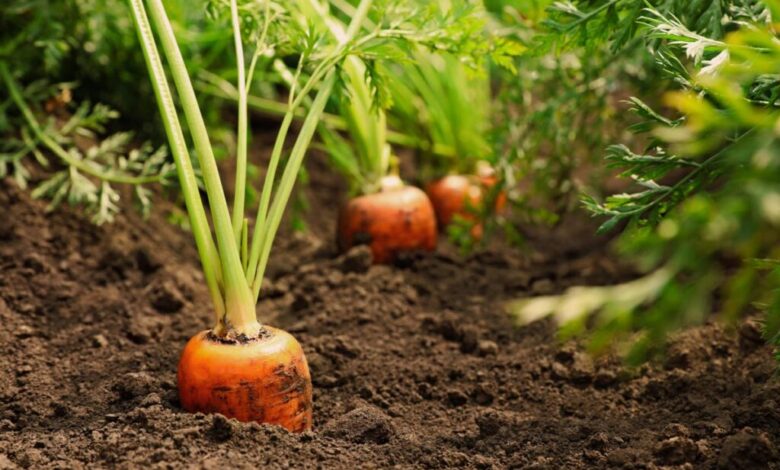Growing Root Vegetables: A Complete Guide to Cultivating Nature’s Underground Treasures

Growing root vegetables is one of the most rewarding experiences for any home gardener. These nutrient-rich crops—like carrots, beets, radishes, potatoes, turnips, and parsnips—grow beneath the soil’s surface, quietly developing flavor, texture, and nutrition while transforming even a small garden into a powerhouse of self-sufficiency. Whether you’re a beginner starting a backyard garden or an experienced grower aiming to refine your techniques, understanding the essentials of growing root vegetables will ensure a healthy, abundant harvest.
Understanding Root Vegetables
Root vegetables are plants whose edible parts grow underground. They store energy in their roots in the form of starches and sugars, which gives them their distinct earthy flavor and dense texture. Common examples include:
- Carrots: Sweet, crisp, and perfect for salads or roasting.
- Beets: Vibrantly colored and packed with antioxidants.
- Radishes: Quick-growing and peppery, great for beginner gardeners.
- Potatoes: A staple crop that thrives in cool, loose soil.
- Parsnips and Turnips: Hearty roots that improve in sweetness after frost exposure.
Understanding the needs of each type is key when growing root vegetables successfully.
Choosing the Right Soil
Soil quality is the foundation of every healthy crop, especially for root vegetables. Because the edible part grows beneath the surface, the soil must be loose, well-draining, and free of rocks or compacted clumps.
- Soil Texture: Sandy loam or well-aerated garden soil is ideal. Avoid clay-heavy soil, as it restricts root growth and causes deformities.
- pH Level: Most root vegetables prefer slightly acidic to neutral soil (pH 6.0–7.0).
- Nutrients: While nitrogen promotes leafy growth, excessive amounts can reduce root development. A balanced fertilizer rich in phosphorus and potassium supports healthy root formation.
Before planting, till the soil deeply—about 10–12 inches—to create an even, soft bed that encourages downward growth.
The Right Conditions for Growth
When it comes to growing root vegetables, timing and temperature play major roles. Most root crops thrive in cool weather, making them perfect for early spring and fall planting.
- Temperature: Optimal growth occurs between 45°F and 75°F (7°C–24°C).
- Sunlight: These crops need full sun, ideally 6–8 hours per day. If possible, consider using an LED grow light.
- Watering: Consistent moisture is crucial. Uneven watering can lead to cracked roots or poor texture. Aim to keep the soil evenly moist but never soggy.
Mulching around the plants helps retain soil moisture, regulate temperature, and prevent weed competition.
Planting and Spacing
Proper spacing and planting depth are vital for the successful cultivation of root vegetables. Overcrowding can stunt growth and deform roots.
- Depth: Generally, seeds should be planted about 1/4 to 1/2 inch deep, though this varies slightly by crop.
- Spacing: Thin seedlings once they sprout to prevent crowding—carrots and radishes need about 2 inches between plants, while larger roots like turnips and beets require around 4 inches.
- Succession Planting: To enjoy a continuous harvest, sow seeds every two to three weeks during the growing season.
For crops like potatoes, plant whole or cut tubers with “eyes” facing upward, spacing them about 12 inches apart in rows.
Maintenance and Care
Once your seeds are in the ground, consistent care is the key to success. Weed control, pest management, and nutrient balance all contribute to a thriving garden.
- Weeding: Keep the area weed-free, as weeds compete for nutrients and moisture.
- Pests: Watch for common invaders like root maggots, aphids, and nematodes. Natural remedies such as neem oil or crop rotation can help prevent infestations.
- Fertilization: Use compost or organic matter mid-season to replenish soil nutrients. Avoid excessive nitrogen once roots begin to form.
Maintaining even moisture and removing diseased plants early will prevent rot and ensure a healthier crop.
Harvesting Root Vegetables
Knowing when to harvest is one of the most satisfying parts of growing root vegetables. Timing depends on the crop:
- Carrots & Radishes: Usually ready within 3–8 weeks after planting.
- Beets & Turnips: Typically mature in 8–10 weeks.
- Potatoes & Parsnips: Take longer, often 12–16 weeks or more.
You’ll know your roots are ready when their tops begin to push slightly above the soil. Gently loosen the soil with a fork and lift the roots carefully to avoid bruising.
Storing and Preserving Your Harvest
Proper storage keeps your root vegetables fresh for months. After harvesting, brush off excess soil (don’t wash them until ready to use) and store them in a cool, dark, and well-ventilated space.
- Ideal Conditions: 32°F–40°F (0°C–4°C) with high humidity.
- Storage Tips: Keep carrots, beets, and turnips in boxes of damp sand or sawdust to retain moisture. Potatoes prefer slightly drier conditions to prevent rot.
With good storage practices, you can enjoy your homegrown produce well into the winter months.
Final Thoughts
Growing root vegetables is both a science and an art—a process that connects us directly to the earth’s hidden bounty. These underground gems reward patience and care with incredible flavors, nutrition, and versatility. By preparing the soil, timing your planting, and tending to their needs, you can cultivate a thriving root garden that yields for months on end.
Whether you’re growing crunchy carrots, vibrant beets, or hearty potatoes, each harvest tells a story of patience, balance, and the quiet beauty of nature at work beneath the soil. Root vegetables remind us that the most valuable things often grow where we least expect them—deep, steady, and full of life.




